sensor
Latest
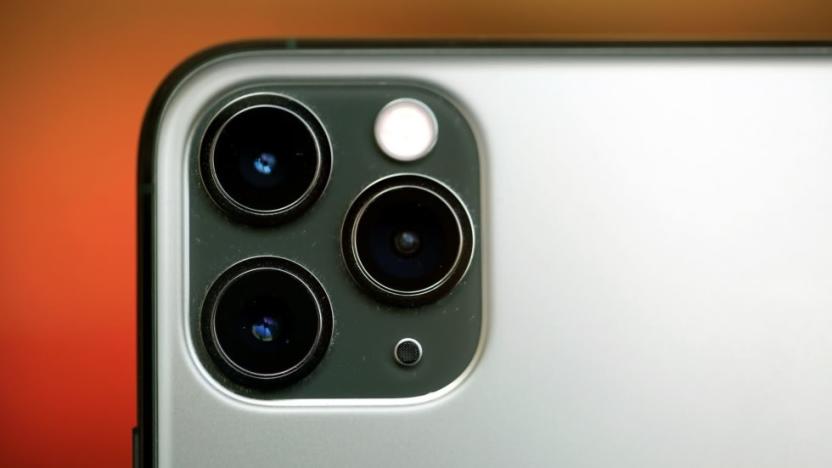
The next iPhone could have a depth-sensing camera on the back
The latest thing to emerge from the wheels at the rumor mill is the suggestion that the next iPhone will get a rear-facing 3D camera. According to Fast Company's sources, Apple will cram TrueDepth, the same sensors used for in the forward-facing array for FaceID, into the iPhone's primary camera setup. The tech will apparently be bought from Lumentum, the same company that currently makes the FaceID sensors.

Mercedes' new E-Class knows when you're holding the wheel
Mercedes vehicles come with state-of-the-art driver assist features, but with the 2021 E-Class sedans, it wants to make sure you use them properly. As such, it has introduced a new steering wheel with capacitive touch technology that can detect whether your hands are on the wheel.

NASA is crowdsourcing a sensor that can survive Venus
Venus is hostile to just about everything, including probes -- and while NASA thinks it has Venus-resistant electronics, that doesn't mean future rovers are ready to touch down on the planet's hellish surface. To that end, NASA wants your help. It's teaming with HeroX on a crowdsourced competition to develop an obstacle avoidance sensor that could survive on the Venus-bound AREE explorer. A total of $30,000 in prizes will go to the top three sensors that can navigate rough terrain while withstanding the extreme temperatures (over 800F) and pressure (92 times that of Earth) of the planet.

JDI's ultrathin biometric sensor is built for 'high security' authentication
Japan Display, the company known for cramming massive screen resolutions into tiny spaces, has created the world's first ultrathin image sensor that measures fingerprints, veins and pulse waves. At 15 micrometers thick the sensor is as thin as paper and features both high-speed readout and high-resolution imaging capabilities.

SteelSeries' latest gaming peripherals are more affordable than usual
SteelSeries is known for its mid- to high-end gaming peripherals -- now it's hoping to entice more players to its brand with a suite of more affordable items. It's just launched a new mouse and a couple of new keyboards, and for their attractive price points the company has managed to cram in a lot of decent specs.

Sensel tests out its shape-shifting force sensors on smartphones
Sensel has always prided itself on the flexibility of its force sensing tech. In fact, it's the primary selling point of the Morph, the company's shapeshifting touchpad that can be a drawing tablet, a drum machine or a video editing bay. But, no matter how wide of a net the Morph cast, it's definitely a bit of a niche product. So, the next step for Sensel is to get its tech into other devices made by other companies. This week at CES, it's showing off a proof of concept that puts its Pressure Grid sensor in a phone, beneath a flexible AMOLED display made by Visionox.

Moen's voice-activated faucet gives cooks precise amounts of water
Moen, one of the biggest faucet companies in the US, was last spotted at CES showing off its shower "concierge," but now it's turning its attention to more traditional sink fixtures. This year, it announced the U by Moen Smart Faucet -- a voice-activated faucet that helps you do everyday kitchen tasks hands-free. From preparing a baby's bottle to filling a pasta pot, just tell the faucet how much water you need, and at what temperature, and it'll dispense it on command. You can set unlimited personalized presets for specific cooking tasks, and activate water flow through voice control, a wave sensor, or via a good old fashioned button. Moen hasn't announced pricing for its latest addition, but it's likely to cost a substantial amount more than old-fashioned mechanical faucets.
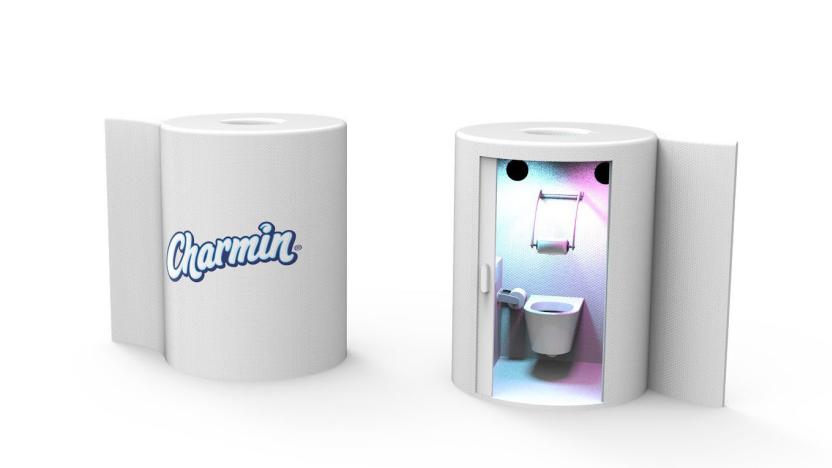
Charmin thinks your bathroom needs robots and VR
Charmin, the popular toilet paper brand, has big plans for CES. Its Charmin GoLab will showcase "cheeky" conceptual prototypes all meant to improve the bathroom experience. They're a blend of robotics, sensors and virtual reality, and they're all equally ridiculous.
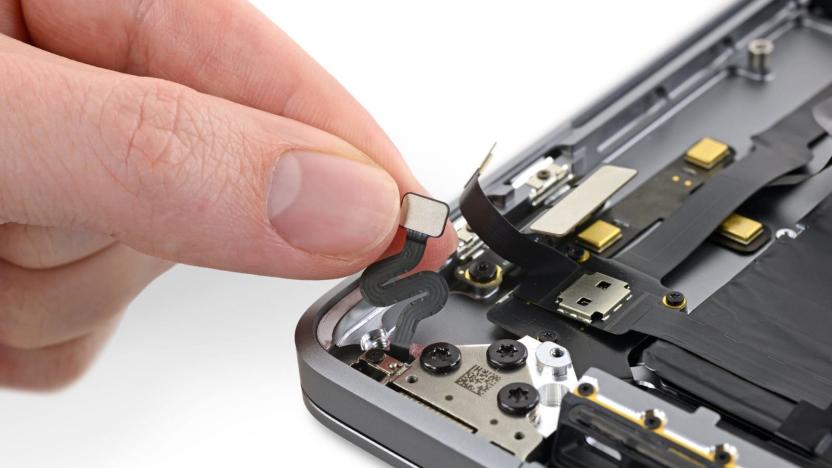
The 16-inch MacBook Pro has a mysterious 'lid angle sensor'
The 16-inch MacBook Pro still has some mysteries left after its initial teardown. Both MacRumors and iFixit have confirmed the presence of a "lid angle sensor" that appears to replace the usual Hall effect sensor (measuring the magnitude of a magnetic field) used to detect whether the laptop is open or closed. It's not certain what's different, but there's also a magnet in the hinge proper. An Apple support document asks technicians to calibrate the sensor to consider a display repair successful.

Xiaomi unveils its 108-megapixel smartphone
Xiaomi has unveiled the CC9 Pro smartphone that has one of the highest-resolution cameras -- period -- that you can buy. For instance, the 108-megapixel wide-angle camera has more resolution than Fujifilm's 102-megapixel GFX 100 medium format camera, which has a sensor about 15 times larger. On top of that, the CC9 Pro has four other rear cameras: a 5-megapixel 5x telephoto, 12-megapixel 2x telephoto, 20-megapixel ultra wide-angle lens and a 2-megapixel macro camera with big 1.75um pixels.
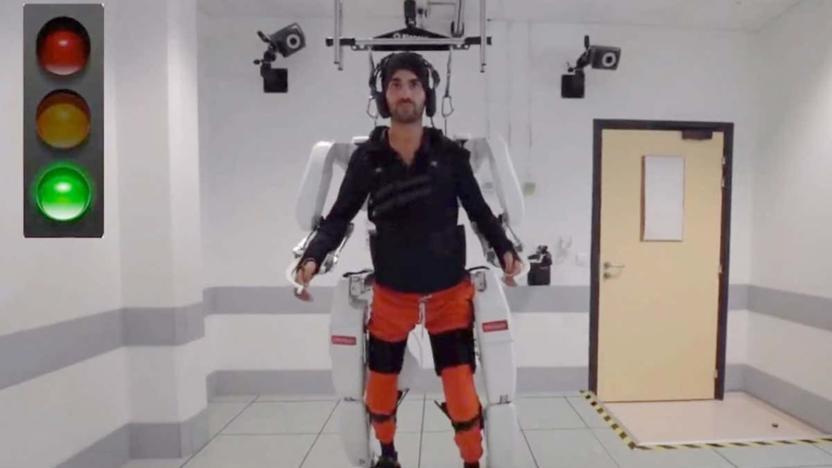
A mind-controlled exoskeleton helped a paralyzed man walk again
A paralyzed man regained the ability to walk with the help of a robotic exoskeleton that he controlled with his mind. Unlike other, more invasive mind-controlled robotics, this one used electrodes implanted above the brain's outer membrane, not in the brain itself. That could reduce the risk of infection and other obstacles that have limited the success of mind-controlled robotics.
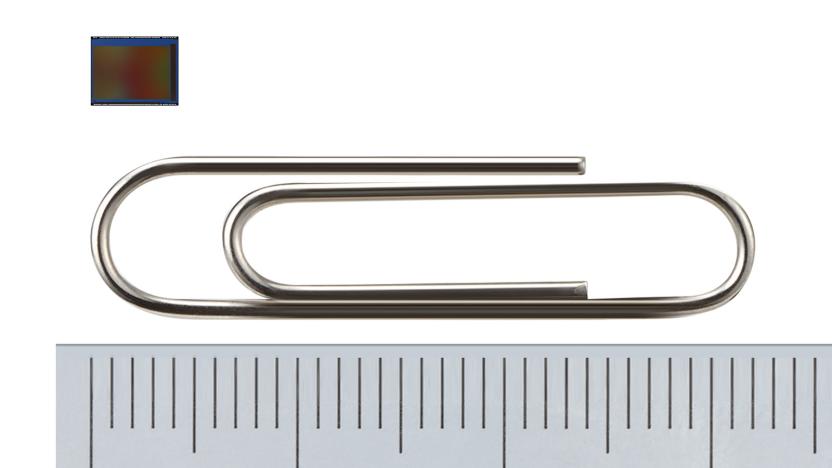
Samsung's 43.7-megapixel sensor has the tiniest pixels yet
Samsung's latest smartphone camera sensor above is under 5mm wide, but it has a resolution of 43.7 megapixels -- more than most DSLRs. That means the pixels on the "Isocell Slim GH1" are just 0.7 micrometers wide, beating the 0.8-micrometer pixels on Samsung's 64- and 108-megapixel sensors. "That will enable sleeker and more streamlined designs as well as excellent imaging experiences in tomorrow's smartphones," said image sensor VP Yongin Park in a press release.
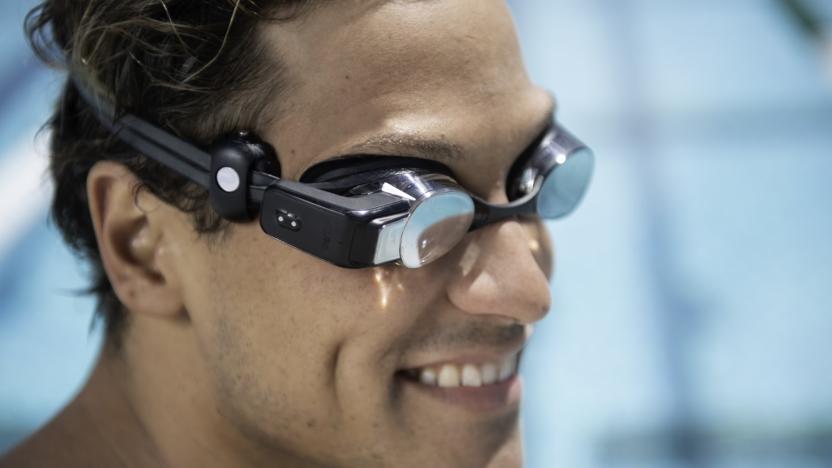
Form's Swim Goggles display heart rate data in the pool
You might have thought Form already perfected the Swim Goggles, but the company is about to add another welcomed feature: heart rate tracking. Today, Form announced that it's teamed up with the fitness wearable company Polar to introduce the heart rate tech. Beginning in November, a free software update from Form will make the Swim Goggles compatible with Polar's OH1 and OH1+ heart rate sensors.

Sticker sensor monitors your body using wireless power
Wearable body sensors have a common problem: they need power and antennas, and all that equipment leads to bulky devices that influence your behavior. Stanford researchers, however, have developed a system that could be almost imperceptible. Their BodyNet sticker sensor gathers power and transmits data using an RFID connection to a receiver on nearby clothing, making the sensor itself about as comfortable and flexible as an adhesive bandage. It measures subtle changes in skin that provide a wealth of data for the body, whether it's your heartbeat, breathing rate or muscle activity.

Samsung's 108-megapixel mobile sensor closes in on mirrorless cameras
With the smartphone megapixel camera wars raging on, Samsung has fired a significant shot. It unveiled a 108-megapixel smartphone camera sensor that's likely to appear in an incoming Xiaomi Redmi smartphone. The 1/1.33-inch ISOCELL Bright HMX sensor, developed by Samsung in collaboration with Xiaomi, is one of the largest smartphone sensors ever, about three quarter the size of the 1-inch sensor on Sony's RX100 VII. That's just a touch smaller than the sensor Nokia used on its legendary Pureview 808 phone.

Bird's latest rideshare scooter is designed to thwart vandals
Rideshare scooters are designed to be a quick and convenient way to get around town, but because we're not allowed to have nice things, many are falling foul of damage and vandalism -- there's even an entire Instagram account dedicated to trashing them. But Bird is taking a stand, and has unveiled its next generation e-scooter that boasts an arsenal of anti-vandalism features.

Microfluidic sensor could spot life-threatening sepsis in minutes
Sepsis (where your immune system starts a chain of inflammation reactions) is potentially deadly, especially if septic shock leads your organs to fail, but diagnosing that in a timely fashion is still difficult or requires an unwieldy device. Thankfully, MIT researchers might have a way to identify sepsis before it's too late. They've designed a small microfluidic sensor that could detect sepsis in roughly 25 minutes, or enough time for doctors to start treatment. It might not look like much, but it promises far more sensitive detection than before.

MIT's 'RoboRaise' helps you lift things by studying your muscles
It's all well and good having a virtual assistant like Alexa or Siri in your lounge, but they make for a pretty useless robotic companion when it comes to shifting a sofa or getting a heavy box from a cupboard. MIT CSAIL has a solution in its sights though, and has developed a robot that can help lift things by studying a human's biceps.

Samsung sensor paves the way for 64-megapixel smartphone cameras
Samsung has leapt ahead of Sony in the smartphone megapixel wars with the launch of the ISOCELL Bright GW1, the world's' first 64-megapixel sensor for smartphones. The chip, while packing more resolution than Samsung's current 48-megapixel sensor, will use the same .8-micrometer-sized pixels. That means it'll be physically larger and have more light-gathering capability.

Ford's futuristic shopping cart can brake on its own
Ford has been applying its automotive expertise to create some amusing, impractical devices like a conveyor-belt bed and noise-cancelling doghouse, because why the heck not? Now, the automaker has come up with another doozy. It's a self-braking shopping cart based on its Pre-Collision Assist technology that's designed to prevent any supermarket mayhem. If your kids use it as a skateboard or if it runs away in the parking lot, a sensor can detect objects in the way and bring it to a smooth stop.





